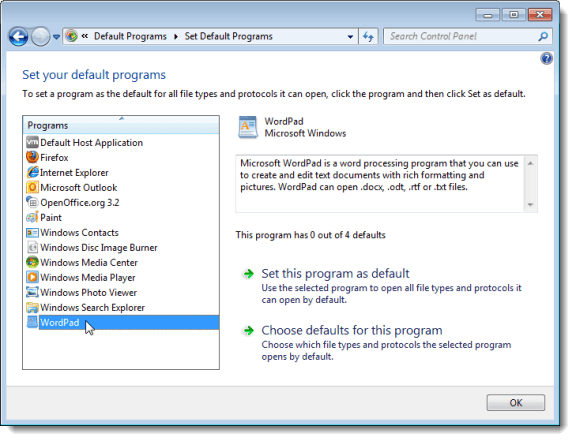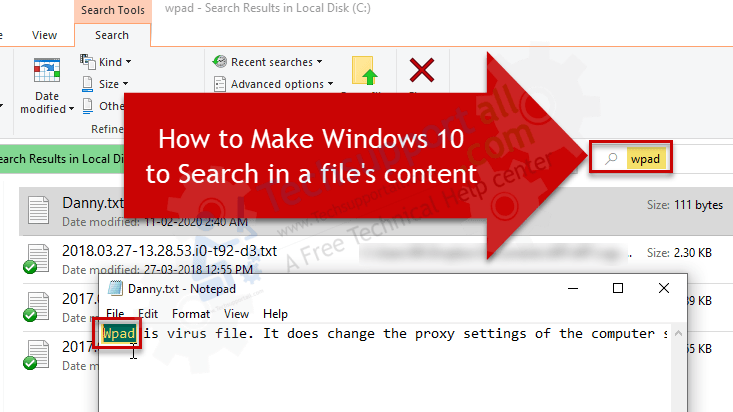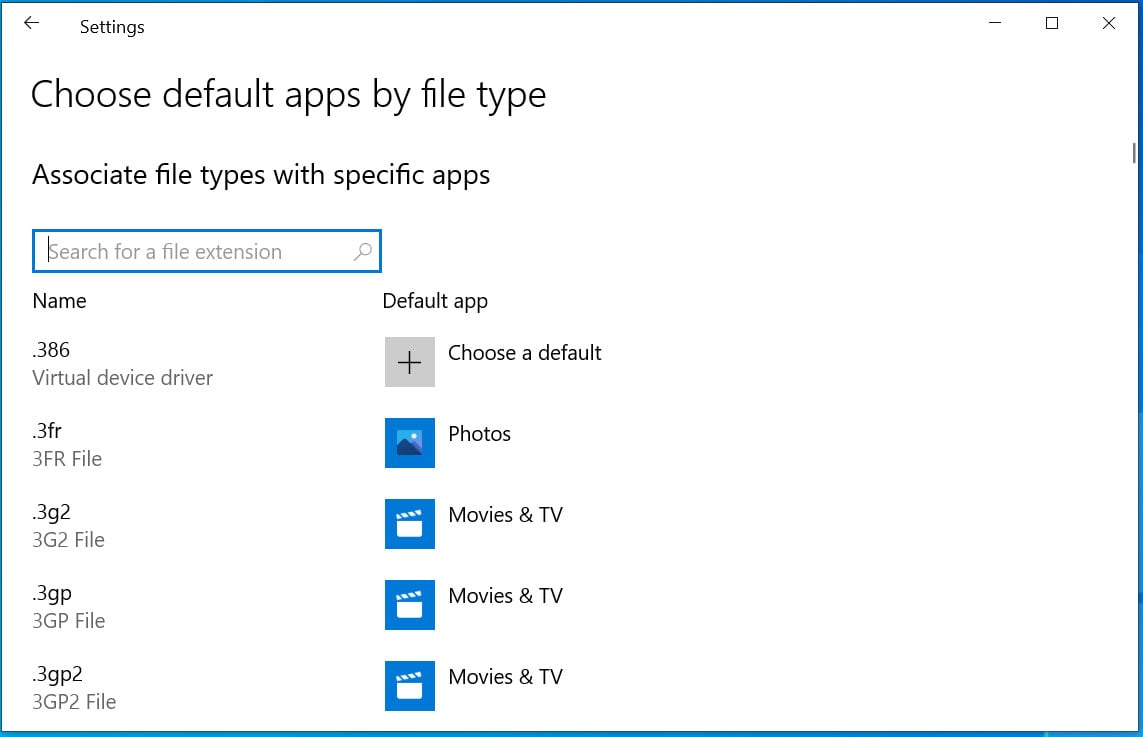

- #SEARCH FOR SPECIFIC FILE TYPE WIN 10 HOW TO#
- #SEARCH FOR SPECIFIC FILE TYPE WIN 10 INSTALL#
- #SEARCH FOR SPECIFIC FILE TYPE WIN 10 FOR WINDOWS 10#
- #SEARCH FOR SPECIFIC FILE TYPE WIN 10 FREE#
- #SEARCH FOR SPECIFIC FILE TYPE WIN 10 WINDOWS#
This means that rather than using a familiar system of icons and menus, it is text-based and therefore not something that everyone will be comfortable with.īecause of the potential for things to go wrong, Windows File Recovery is only really recommended for slightly more experienced computer users.īefore you get started with Windows File Recovery, there are two things you need to prepare: there are a couple of conditions you should know:
#SEARCH FOR SPECIFIC FILE TYPE WIN 10 FREE#
This is Microsoft's own free data recovery tool, but it is very different from programs like EaseUS Data Recovery Wizard because it is a command-line tool.
#SEARCH FOR SPECIFIC FILE TYPE WIN 10 INSTALL#
Recover Deleted Photos Mac Trash Recovery Recycle Bin Recovery Restore Deleted Files Windows 10 Using Windows File RecoveryĪs long as you have at least Windows Update (Windows 10 2004) installed, you have access to Windows File Recovery – although you will need to install it from the Microsoft Store. It does not matter if you have a backup available or not, the program will almost certainly be able to recover your deleted data for you.
#SEARCH FOR SPECIFIC FILE TYPE WIN 10 FOR WINDOWS 10#
One such tool is for Windows 10 and macOS is EaseUS Data Recovery Wizard which has a high success rate and remains easy to use. Perhaps the most reliable method of getting back deleted files is to use dedicated data recovery software.
#SEARCH FOR SPECIFIC FILE TYPE WIN 10 HOW TO#
How to Recover Permanently Deleted Files Windows 10 with Data Recovery Software If you can't find what you are looking for in the Recycle Bin, it is possible that your files have been "permanently" deleted you can try the following methods to get them back. It will only work if you haven't emptied the Recycle Bin, and if you have not bypassed the Bin by holding the Shift key while deleting data. There are, however, limitations to this method. Click "Restore" to recover the deleted files. Select the file you would like to get back and then right-click them. You can also perform a search for a specific file, or use the column headings to identify files based on size, date of modification, and more. Browse through the content of the Recycle Bin to locate the files you need. Open the "Recycle Bin" from the desktop or Start menu and then locate the deleted files you are interested in. If you delete a file by hitting the Delete button on your keyboard or simply drag it to the Recycle Bin, then the steps to undelete files in Windows 10 are easy. Recover Deleted Files in Windows 10 from Recycle Bin PAGE CONTENT: Recover deleted files in Windows 10 from Recycle Bin How to recover permanently deleted files in Windows 10 with data recovery software (Recommended) Restore deleted files Using Windows File Recovery How to recover permanently deleted files in Windows 10 from File Backup or Previous Versions Join us as we show you how to recover deleted files in Windows 10, using built-in tools and third-party options. There are things you can do to get back files you thought you would never see again. Try to delete files when the Bin is full, and data will simply be wiped out.īut all is not lost.

Not only can it hold a certain amount of data, but it will also house files up to a certain size. Holding the Shift key while deleting a file, for instance, bypasses the Recycle Bin so data cannot be easily recovered, and the Recycle Bin is also limited in capacity. Microsoft has included a safety net in the form of the Recycle Bin, but this does not always help – sometimes you can accidentally delete data "permanently". It is, unfortunately, all too easy to accidentally delete files in Windows 10. We'll show you the best approach to take in different data loss situations. Windows also has its own built-in file recovery tools. Select Scan at the bottom of the screen to scan your document or picture.Īfter your scan is finished, select View to see the scanned file before you save it, or select Close to save it. You can edit the scanned document or picture in the preview that appears when you select View."Looking to recover deleted files in Windows 10? There are numerous methods you can use to get data back, including EaseUS data recovery software. Under Save file to, browse to the location where you want to save the scan. Select Show more to show the Save file to options. For example, you can save the file in different file formats-such as JPEG, Bitmap, and PNG. Under File type, select the type of file you want the scan to be saved as. Under Source, select the location you prefer to scan from. Under Scanner, select the scanner you want to use. Place the item you want to scan in the scanner's document feeder. Place the item you want to scan face down on the scanner's flatbed and close the cover.

In the search box on the taskbar, type Windows Scan, and then select Scan from the results. Note: Need to install the Windows Scan app? You can get the app at Microsoft Store.


 0 kommentar(er)
0 kommentar(er)
